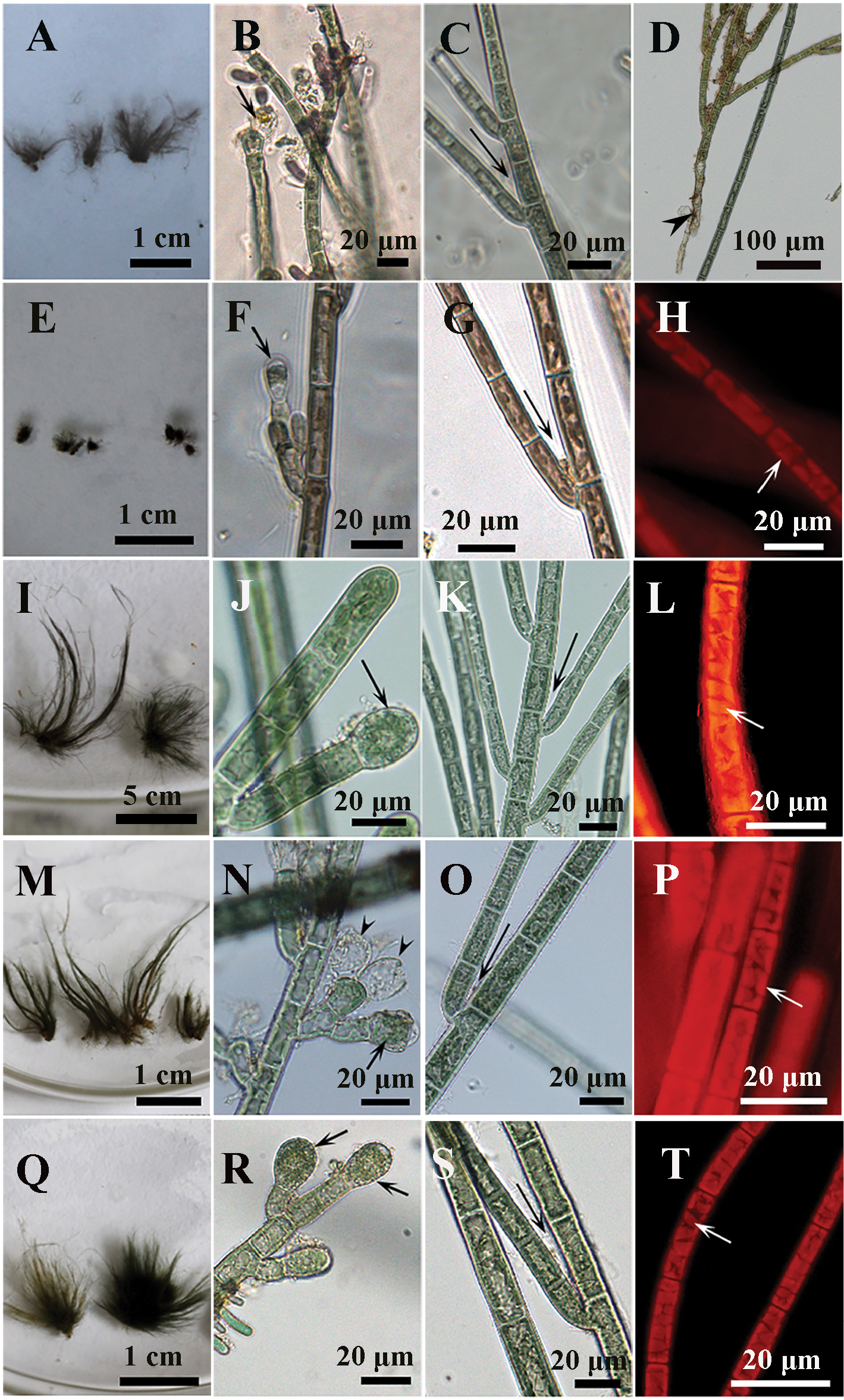
|
||
|
Morphological characters of samples investigated in this study A–D sample GX41 A morphological observation of the tufts of erect filament, bluish in color B monosporangial branch with ovoid monosporangium (black arrow) C filament showing branch angle ≤ 25° (black arrow) D erect filaments arise from basal system consisting of a prostrate mass with sparse rhizoids (black arrowhead) E–H sample GX81 E morphological observation of the tufts of erect filament, brownish in color F monosporangial branch with ovoid monosporangium (black arrow) G filament showing branch angle < 25° (black arrow) H cells have parietal laminate or irregularly lobed Chloroplast (white arrow) I–L sample GD224 I morphological observation of the tufts of erect filament, bluish in color J monosporangial branch with obovoidal monosporangium (black arrow) K filament showing branch angle < 25° (black arrow) L cells have parietal laminate or irregularly lobed Chloroplast (white arrow) M–O sample GD225 M morphological observation of the tufts of erect filament, bluish in color N monosporangial branch with obovoidal monosporangium (black arrow) O filament showing branch angle < 25° (black arrow) P cells have parietal laminate or irregularly lobed Chloroplast (white arrow) Q–T sample GD228 Q morphological observation of the tufts of erect filament, bluish in color R monosporangial branch with obovoidal monosporangium (black arrow) S filament showing branch angle < 25° (black arrow) T cells have parietal laminate or irregularly lobed Chloroplast (white arrow). |